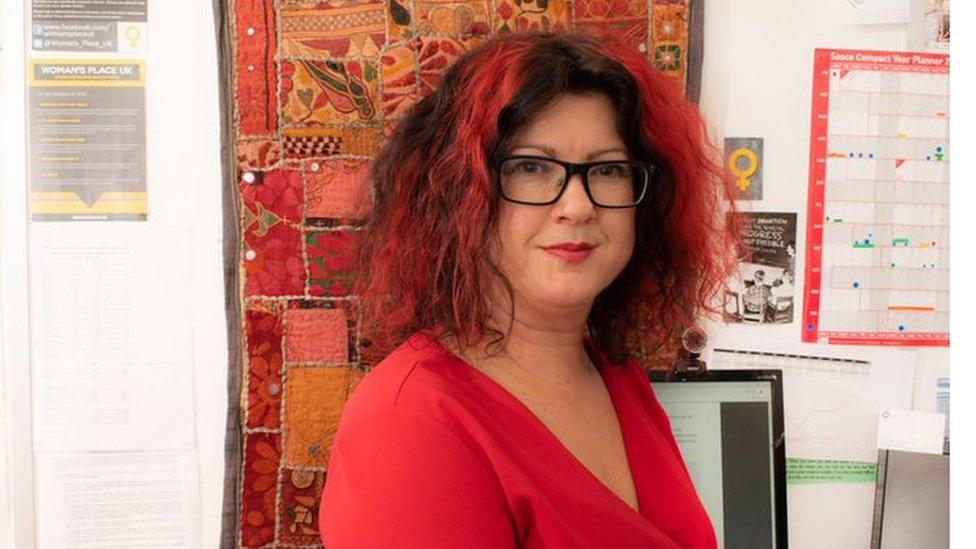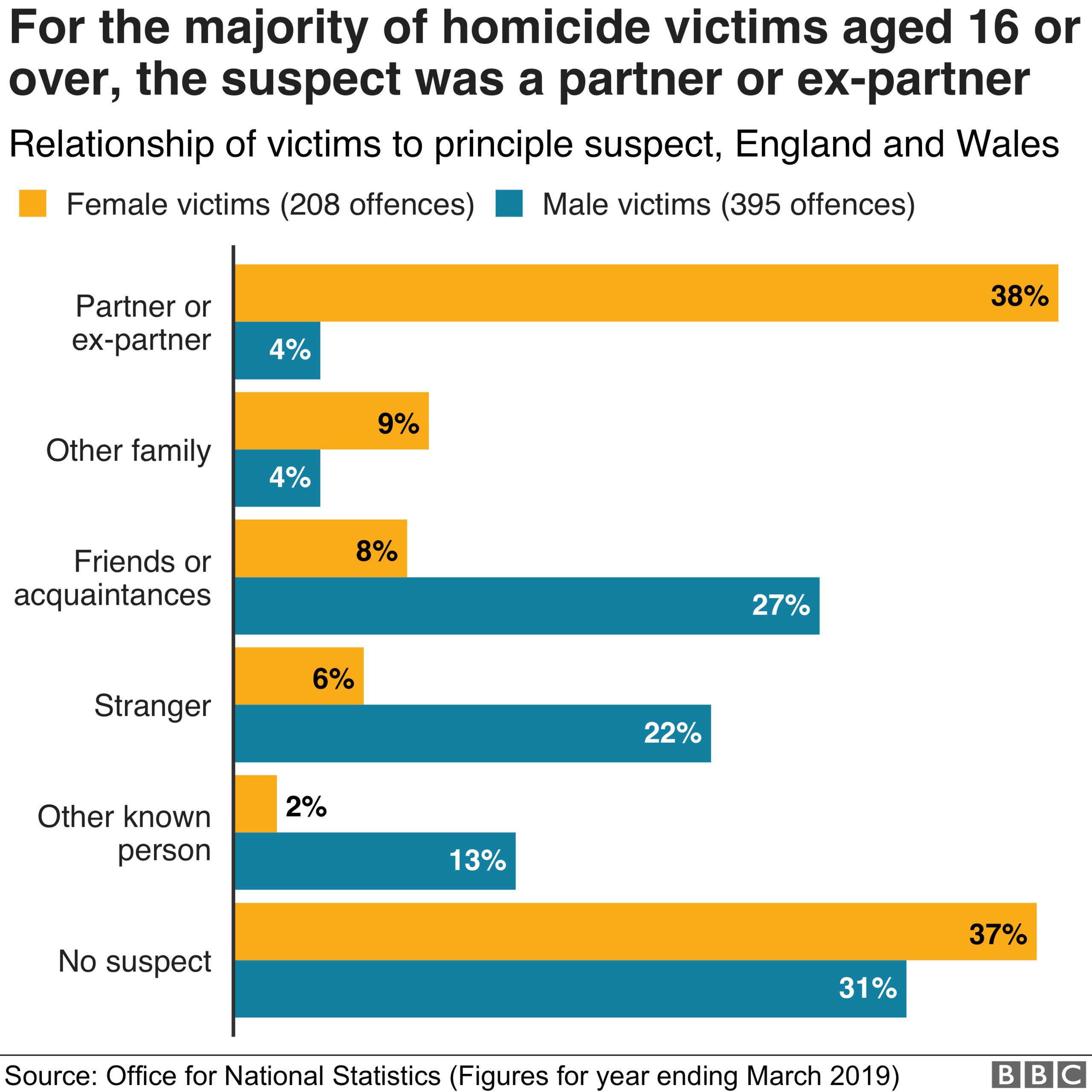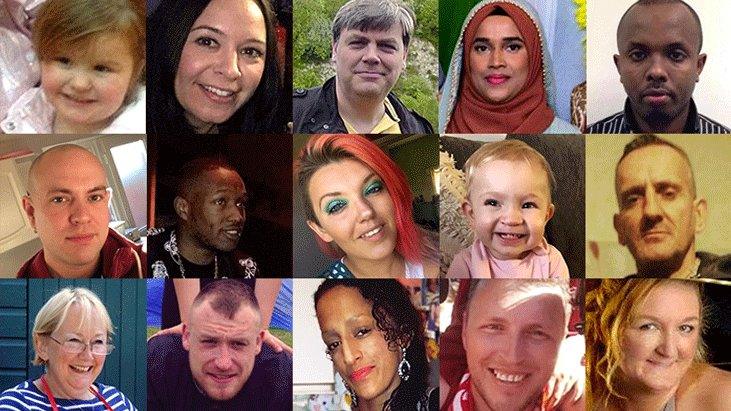Femicide: Women are most likely to be killed by their partner or ex
- Published

A new report suggests that over half (61%) of women killed by men in the UK in 2018 were killed by a current or ex partner.
Its findings refer to cases that have been charged or convicted.
The fourth Femicide Census, conducted by domestic abuse campaigner Karen Ingala Smith, claims that 149 women were killed by 147 men in the UK in 2018.
This has increased by 10 deaths from their last report in 2017.
Femicide is the killing of a woman or girl, usually by a man.
Karen says she started the report in 2012 after reading online about a girl who had been killed by her boyfriend.
"I started keeping a note of the names just to try and figure out how many women it was, and the honest truth is - since then I've never stopped keeping a list of their names."
She explains why she thinks women are more likely to experience domestic violence than men.
"It's the behaviours that we encourage in little boys and little girls, then we expect women to be attractive for men, they're objectified.
"Women are turned into products and men into consumers. And it's a consumer that has the power rather than what they're buying," she tells Radio 1 Newsbeat.

Karen started the Femicide Census in 2012
These findings reflect trends highlighted by the Official for National Statistics earlier this month.
Their stats on homicide also show that female victims were more likely to be killed by a partner or ex partner, external.
But, their percentage is slightly lower at 38% - compared to the Femicide Census.
Karen says that this discrepancy is most likely due to the fact the ONS stats are based on homicide as a whole not just killings by men, or because their stats cover England and Wales only while the Femicide Census covers the UK.
But it's important to remember that her survey only looks at killings where there has been a charge or conviction. So there are likely to be unsolved cases where the killer wasn't known to the victim - the ONS data takes account of this.


In response to the ONS stats, The Victims' Commissioner, Dame Vera Baird previously told the BBC the number of women killed by a partner or ex-partner was "not surprising" but "deeply troubling".
She said: "In the name of these women we need urgently to take more action on early intervention."
'Leaving is complex'
Over a third of the 149 victims listed in the report had previously tried to leave their partner.
But leaving an abusive relationship is not always easy.
"We know that leaving an abusive man is complex and often dangerous," says Sandra Horley from domestic abuse charity Refuge.
"Sadly, it is not surprising that the majority of women are killed by their current or former partner, it's horrific.
"Women continue to be killed at such a rate by violent men, leaving children without mothers, parents without daughters, families without loved ones."
Overkilling
Just over half of the killings in the report were described as "overkilling".
The Femicide Census describes this as "gratuitous violence that goes further than that necessary to cause the victim's death".
This figure was higher for women aged 25-34. Two-thirds of the 40 killings in that age group were classified as overkilling.
Despite these figures, Karen says there isn't an age limit on vulnerability to men's violence.
"There isn't one ethnic, age or social class group that is more at risk, no woman is safe from men's violence."
- Published21 January 2020

- Published13 September 2019

- Published8 March 2019
